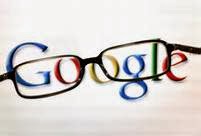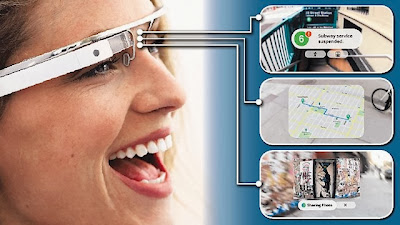With so much new information
surrounding Google Glass, we have
completely updated this 'know
everything' feature.
Many of us spend a significant portion of our day glued to our smartphones, or to
other connected devices. Reading social media or checking out the weather or
otherwise dipping into the wealth of data at our disposal will typically consume
all of our attention, making it hard to do anything else.
Google Glass might offer a solution to this problem, giving us a way of using the
outboard brain of the internet while still being able to do other things. Glass
was created, according to Google, to "be there when you need it and get out of
your way when you don't."
The first Glass units have been with early adopters (who had to sign up to a
lottery for the privilege) since April and Google is using this semi-public
testing period to fine tune the device for general consumption, as well as get the
world used to the idea of wearables.
Essentially, Google Glass is a wearable Android-powered computer built into
spectacle frames so that you can perch a display in your field of vision, film,
take pictures, search and translate on the go as well as run specially-designed
apps.
Google Glass uses a miniature display to put data in front (or at least, to the
upper right) of your vision courtesy of a prism screen. This is designed to be
easily seen without obstructing your view.
Glass responds to voice commands as well as taps and gestures on the touch-
sensitive bar that runs along the side of the frame. You can start a search with
"Ok Glass.." and take a photo or launch an app with a command phrase or a tap of
your finger. Glass can also be paired with a phone using the My Glass app to allow
quick fiddling with settings and customisation.
Google Glass runs a version of Android, so developers can easily create apps that
take advantage of its unique display and input methods. Developers using Google's
Mirror API, which makes it possible for apps to speak directly with a Glass
headset, are forbidden from charging for their software or embedding ads in the
Glass display. Google has indicated that this policy may change however.
The early Google Glass apps provide a neat glimpse into the potential of the
headset.
You'll be able to use Google Maps to get directions although as there is no built
in GPS receiver you'll need to tether Glass to your smartphone. Several third
party developers have announced apps for services including Evernote, Skitch and
Path.
The New York Times has also demoed an app that will pop up news headlines on
request and JetBlue has suggested that it could create an app to show how much
time was left before you had to board your flight. One developer even created an
app (since removed by Google) to allow surreptitious taking of photos simply by
blinking when you have something good in your sights.
Google has snapped up voice specialists DNNresearch whose voice recognition tech
could give Glass the ability to translate words being spoken to you into your own
language on the display. Obviously you'll need a WiFi connection or a hefty data
plan if you're in another country, but it's certainly a neat trick if it works.
Google Glass Design
Glass is designed to be lightweight and as unobtrusive as possible. The frame will
come with adjustable pads for comfort, and is expected to be both light and
extremely robust. It will also have a touchpad along one arm for silent
interaction.
If you already wear glasses, don't worry. Google is
trialing several different designs that will enable Glass
to be attached to existing frames. There is also the
possibility of designer prescription glasses with Glass
functionality built in.
This patent might give us a glimpse of a future, more natural looking version
of Glass.
Sunny Kabra






No comments:
Post a Comment